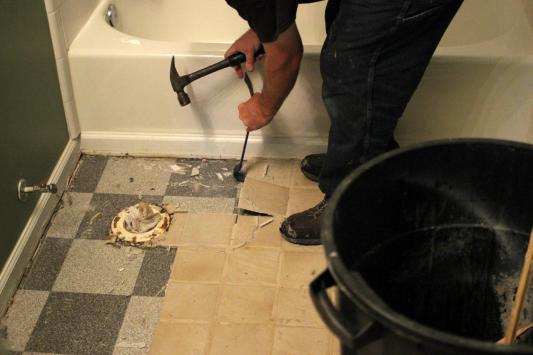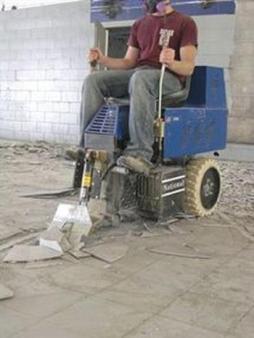Ceramic floor tile is attached to the subfloor, cement board, or concrete below by means of thinset. The joints are also grouted adding some to the difficulty in removal. If you are removing hard tile from drywall or cement board, you will almost never be able to salvage the substrate material. For smaller projects, hard tile may be removed with a simple hammer and chisel or pry bar.

Fine point, medium, and broad chisels/chippers are also available both short in length and longer for more torque.
For medium sized projects, a more efficient way to remove floor tile is with a powered hammer drill equipped with a chisel bit. Break the tile first with a small sledge hammer then wedge the chisel bit at the angle which is the most productive.


For even larger projects, In situations with stronger bonded thinset (or where the worker wishes to be more productive) a power scraper will be required. A power scraper is a relatively small wheeled machine with a blade near the floor which can be lowered to chip away vigorously between the hard tile and the substrate. There are less powerful and more powerful power scrapers.

In situations with very old stubborn tile (typically attached to a concrete floor) , only a very powerful power scraper will remove the tile productively.

For industrial applications, some power scrapers have a water hose attachment which wets the action zone during demolition which keeps dust particles down and chips from flying up.


